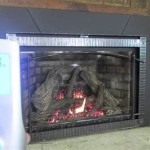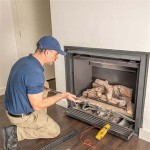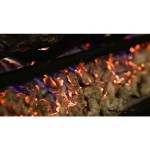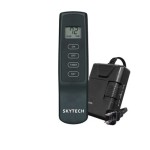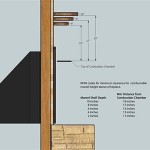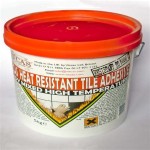Thermostat Gas Fireplaces: A Comprehensive Overview
Gas fireplaces offer a convenient and aesthetically pleasing alternative to traditional wood-burning fireplaces. Among the various types of gas fireplaces, thermostat-controlled models stand out for their ability to maintain a consistent and comfortable temperature within a specified area. These fireplaces incorporate a thermostat system, allowing users to precisely regulate heat output and create a more energy-efficient heating solution. This article will delve into the functionalities, benefits, operation, and considerations associated with thermostat gas fireplaces.
A thermostat gas fireplace integrates a temperature sensing device, or thermostat, with the gas valve that controls the flow of gas to the burner. The thermostat monitors the ambient temperature in the surrounding area, and based on the user-defined setpoint, it modulates the gas flow to either increase or decrease the heat output. This automated process allows for a consistent room temperature, minimizing temperature fluctuations and maximizing comfort. The integration of a thermostat distinguishes these fireplaces from models that only offer manual control, such as simple on/off switches or variable gas flow regulators without temperature feedback mechanisms.
Key Point 1: Functionality and Components of a Thermostat Gas Fireplace
Understanding the individual components and their roles is crucial to appreciating the functionality of a thermostat gas fireplace. The key components include the burner, the gas valve, the thermostat, the igniter, and the safety features.
The burner is the primary component responsible for generating heat. Typically, it is constructed from stainless steel or ceramic materials designed to withstand high temperatures and promote efficient combustion. The design of the burner influences the flame pattern and heat distribution. Burners can range from simple linear designs to more intricate log sets that mimic the appearance of a traditional wood-burning fire.
The gas valve is a critical component that regulates the flow of natural gas or propane to the burner. In a thermostat-controlled fireplace, the gas valve is electronically controlled by the thermostat signal. The valve can modulate the gas flow based on the deviation between the ambient temperature and the thermostat setpoint. More sophisticated valves offer a wider range of modulation, allowing for finer control over heat output. Some gas valves also incorporate safety features such as flame failure detection, which automatically shuts off the gas supply if the flame is extinguished unexpectedly.
The thermostat is the temperature sensing device that provides the feedback to control the gas valve. Thermostats can be either mechanical or electronic. Mechanical thermostats utilize a bimetallic strip that bends in response to temperature changes, directly actuating the gas valve. Electronic thermostats, on the other hand, use a thermistor or thermocouple to measure temperature and send an electrical signal to a control board. Electronic thermostats offer greater precision and can be programmed for automated operation.
The igniter is the mechanism responsible for initiating combustion. Gas fireplaces typically employ either a piezo igniter or an electronic spark ignition system. Piezo igniters generate a spark when a button is pressed, while electronic spark ignition systems use a high-voltage transformer to create a continuous spark until the flame is established. Some modern fireplaces utilize hot surface igniters, which heat a ceramic element to a high temperature, igniting the gas when it comes into contact with the hot surface.
Safety features are paramount in any gas fireplace design. These features often include a flame failure device (FFD), which shuts off the gas supply if the flame is extinguished. Other safety features may include pressure relief valves and overheat protection systems to prevent hazardous conditions. Regular inspection and maintenance of these safety features are critical to ensure the safe operation of the fireplace.
Key Point 2: Operational Modes and Benefits of Thermostat Control
Thermostat gas fireplaces offer various operational modes and benefits that enhance comfort and energy efficiency compared to manually controlled models.
The primary operational mode is the thermostat mode, wherein the fireplace maintains a constant room temperature based on the user-defined setpoint. The fireplace continuously monitors the ambient temperature and adjusts the gas flow to maintain the desired temperature. This mode is ideal for providing consistent warmth and comfort, particularly during colder months.
Some thermostat gas fireplaces also offer a manual mode. In this mode, the thermostat is bypassed, and the user directly controls the gas flow using a knob or switch. This mode can be useful for providing a specific level of heat output regardless of the room temperature. However, it requires more manual adjustments and may not be as energy-efficient as the thermostat mode.
Programmable thermostats offer even greater flexibility. These thermostats allow users to set different temperature setpoints for different times of the day or week. For example, the temperature can be set lower during the day when no one is home and higher in the evening when the room is occupied. This feature can significantly reduce energy consumption and lower heating costs.
The benefits of thermostat control are numerous. Firstly, it provides consistent and comfortable heating. The automated temperature regulation eliminates temperature fluctuations and ensures a comfortable environment. Secondly, it enhances energy efficiency. By only using the necessary amount of gas to maintain the desired temperature, thermostat-controlled fireplaces can reduce energy consumption and lower heating bills. Thirdly, it offers convenience. Users do not need to continuously adjust the gas flow manually, freeing up their time and effort.
Furthermore, thermostat gas fireplaces can contribute to improved indoor air quality. By maintaining a consistent temperature, they can help prevent the buildup of condensation and mold growth, which can negatively impact indoor air quality. Also, well-maintained gas fireplaces produce very little particulate matter compared to wood-burning fireplaces, contributing to cleaner indoor air.
Key Point 3: Installation, Maintenance, and Considerations
Proper installation and maintenance are crucial for ensuring the safe and efficient operation of a thermostat gas fireplace. It is essential to consider several factors during installation, and regular maintenance is necessary to prevent problems and extend the lifespan of the fireplace.
Installation should always be performed by a qualified technician who is experienced in gas appliance installation. The technician will ensure that the fireplace is properly vented, that the gas line is connected securely, and that all safety features are functioning correctly. Improper installation can lead to gas leaks, carbon monoxide poisoning, and other hazardous conditions. Local building codes and regulations must be followed during installation.
Regular maintenance is essential for keeping the fireplace in good working order. This includes cleaning the burner, inspecting the gas valve, checking the venting system, and testing the safety features. The frequency of maintenance will depend on the usage of the fireplace, but it is generally recommended to have it serviced annually. Cleaning the burner removes any debris or soot that may have accumulated, ensuring proper combustion. Inspecting the gas valve ensures that it is functioning properly and that there are no leaks. Checking the venting system ensures that exhaust gases are being properly vented to the outside. Testing the safety features, such as the flame failure device, ensures that they are working correctly.
Several factors should be considered when selecting a thermostat gas fireplace. The size of the room to be heated is important. A fireplace that is too small will not be able to heat the room adequately, while a fireplace that is too large will be inefficient and may overheat the room. The BTU rating of the fireplace should be appropriate for the size of the room. The style of the fireplace is also a consideration. Gas fireplaces are available in a variety of styles, from traditional to modern, so users can choose one that complements their decor.
The type of fuel is another factor to consider. Gas fireplaces can be fueled by natural gas or propane. Natural gas is typically less expensive than propane, but it is not available in all areas. Propane requires a storage tank, which can be an additional expense. The type of thermostat is also a consideration. Electronic thermostats offer greater precision and programmability than mechanical thermostats, but they may be more expensive.
Finally, it is important to choose a reputable brand that offers a warranty and provides good customer support. A warranty will protect against defects in materials and workmanship, and good customer support will be helpful if any problems arise. Reading reviews and comparing different models can help consumers make an informed decision.
Proper ventilation is a critical safety component. Gas fireplaces produce exhaust gases, including carbon monoxide, which must be vented to the outside. The venting system should be inspected annually to ensure that it is free of obstructions and that it is functioning properly. Blocked or damaged venting systems can lead to carbon monoxide poisoning, which can be fatal.
Understanding the principles of thermostat gas fireplaces, their components, operational modes, and maintenance requirements empowers users to make informed decisions and ensure safe and efficient operation. By adhering to proper installation procedures, performing regular maintenance, and choosing a model that meets specific needs, users can enjoy the comfort and convenience of a thermostat gas fireplace for years to come.

Skytech Ts 3 Wired Wall Mounted Thermostat Fireplace Control

Flameworks Gas Fireplace Thermostat Non Programmable Vertical Mount Fire Parts Com

Everwarm Thermostat Rermote Control For Gas Logs Fine S

Flameworks Gas Fireplace Thermostat Non Programmable Vertical Mount Fire Parts Com

Heat N Glo Multi Functional Wall Control Fine S Gas

Napoleon Wall Mounted Digital Thermostat

Skytech 1001th Thermostat Fireplace Remote Control

Gas Fireplace Wall Thermostat B C Comfort Hvac Repair Installation

Wifi Smart Fireplace Programmable Thermostat Timer Remote Receiver Control Temperature Or Humidity

How To Connect A Nest Thermostat Gas Fireplace Ohmefficient

